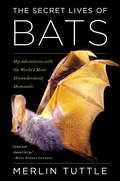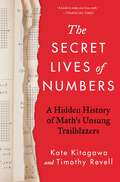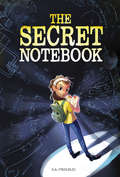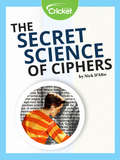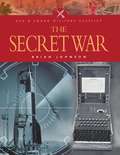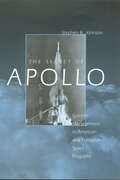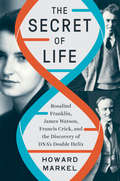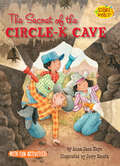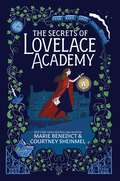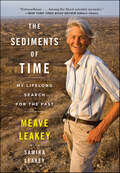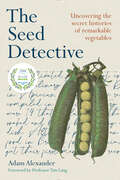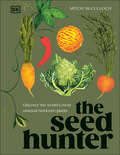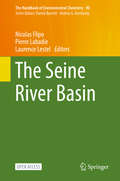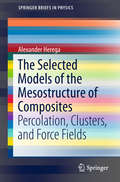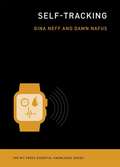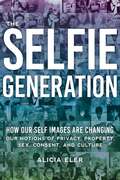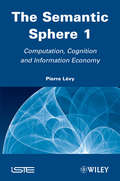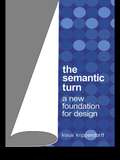- Table View
- List View
The Secret Lives of Bats: My Adventures with the World's Most Misunderstood Mammals
by Merlin TuttleStories and science surrounding the beloved bat, from an ecologist who has dedicated his life to the curious creature.Few people realize how sophisticated and intelligent bats are. Merlin Tuttle knows, and he has stopped at nothing to find and protect them on every continent they inhabit. Sharing highlights from a lifetime of adventure and discovery, Tuttle takes us to the frontiers of bat research to show that frog-eating bats can identify frogs by their calls, that some bats have social sophistication similar to that of higher primates, and that bats have remarkable memories. Bats also provide enormous benefits by eating crop pests, pollinating plants, and carrying seeds needed for reforestation. They save farmers billions of dollars annually and are essential to a healthy planet. Tuttle&’s account forever changes the way we see these poorly understood yet fascinating creatures. &“Grips and doesn't let go.&”—Wall Street Journal&“It&’s a terrific read.&”—Huffington Post &“A whirlwind adventure story and a top-shelf natural history page-turner.&”—Sy Montgomery, author of The Soul of an Octopus&“One of the best, most interesting books I&’ve ever read.&”—Elizabeth Marshall Thomas, author of The Hidden Life of Dogs
The Secret Lives of Numbers: A Hidden History of Math's Unsung Trailblazers
by Kate Kitagawa Timothy RevellShortlisted for the 2024 British Academy Book PrizeA new history of mathematics focusing on the marginalized voices who propelled the discipline, spanning six continents and thousands of years of untold stories."A book to make you love math." —Financial TimesMathematics shapes almost everything we do. But despite its reputation as the study of fundamental truths, the stories we have been told about it are wrong—warped like the sixteenth-century map that enlarged Europe at the expense of Africa, Asia and the Americas. In The Secret Lives of Numbers, renowned math historian Kate Kitagawa and journalist Timothy Revell make the case that the history of math is infinitely deeper, broader, and richer than the narrative we think we know.Our story takes us from Hypatia, the first great female mathematician, whose ideas revolutionized geometry and who was killed for them—to Karen Uhlenbeck, the first woman to win the Abel Prize, “math’s Nobel.” Along the way we travel the globe to meet the brilliant Arabic scholars of the “House of Wisdom,” a math temple whose destruction in the Siege of Baghdad in the thirteenth century was a loss arguably on par with that of the Library of Alexandria; Madhava of Sangamagrama, the fourteenth-century Indian genius who uncovered the central tenets of calculus 300 years before Isaac Newton was born; and the Black mathematicians of the Civil Rights era, who played a significant role in dismantling early data-based methods of racial discrimination.Covering thousands of years, six continents, and just about every mathematical discipline, The Secret Lives of Numbers is an immensely compelling narrative history.
The Secret Notebook
by D.A. D'AurelioRiley Green is certain her lie detector pen will improve her status in a school full of kids from the most powerful families of Washington, D.C. But her plan collapses when her invention idea is stolen, her favorite teacher goes missing, and mysterious threats begin to appear around capital. Before vanishing, Riley's teacher entrusts her with her most prized possession, the lost notebook of Nikola Tesla, legendary inventor and scientist. Now Riley and her friends must protect the notebook from thieves who want to steal the details it holds about a dangerous invention. When Riley discovers another secret, she must decode a mysterious message before it's too late. Her teacher's life depends on it.
The Secret Science of Ciphers
by Nick D'AltoEven if you aren't a spy, you probably already use cryptography, or the science of secret communication, every day.
The Secret Science of Sports: The Math, Physics, and Mechanical Engineering Behind Every Grand Slam, Triple Axel, and Penalty Kick
by Jennifer SwansonWhy does a football spiral? How do some athletes jump so high? The answer is science! The Secret Science of Sports helps kids better understand concepts of science, technology, engineering, and math through the sports they love to play and watch. Every sport -- from baseball to basketball, to football and soccer, to wrestling, tennis, and lacrosse -- involves a bit of science, technology, engineering, and math. You can't throw a ball without Newton's Law of Motion, and you can't calculate a player's stats without math. And every type of sports equipment -- a helmet, cleats, shoulder or knee pads -- were designed with the latest engineering and technology. The Secret Science of Sports breaks down normally difficult STEM concepts like forces of motion, gravity, algebra, and even neuroscience, in a language kids can -- and will want to -- understand. Divided into sections like chemistry, biology, physics, technology, and more, this handy guide uses examples from sports like soccer, baseball, softball, football, hockey, lacrosse, tennis, and others to explain important STEM concepts for kids ages 8 to 12. They'll learn how to use math to calculate a batter's average, why a tennis racket is shaped the way it is, how biology affects athletic performance, the aerodynamics behind competitive swimsuits, and much more. With dozens of original, captivating illustrations to engage young readers, kids will have fun while learning about key STEM ideas that will prepare them for years of schooling to come.
The Secret War (Pen & Sword Military Classics)
by Brian JohnsonA look at the scientists and technicians whose hard work off the battlefield assisted the Allied Forces in winning the World War II. Based on the BBC television documentary series of the same name, this book offers a behind-the-scenes look at the fight by the &“back room&” scientists and technicians of the Second World War, including the battles against the Luftwaffe navigational beams, the V-1 and V-2 flying bombs, the development of radar, the battle against the U-boats, countering the magnetic mine, and the breaking of the codes produced by the Enigma machines.
The Secret of Apollo: Systems Management in American and European Space Programs (New Series in NASA History)
by Stephen B. JohnsonWinner of the Emme Award for Astronautical Literature from the American Astronautical SocietyHow does one go about organizing something as complicated as a strategic-missile or space-exploration program? Stephen B. Johnson here explores the answer—systems management—in a groundbreaking study that involves Air Force planners, scientists, technical specialists, and, eventually, bureaucrats. Taking a comparative approach, Johnson focuses on the theory, or intellectual history, of "systems engineering" as such, its origins in the Air Force's Cold War ICBM efforts, and its migration to not only NASA but the European Space Agency.Exploring the history and politics of aerospace development and weapons procurement, Johnson examines how scientists and engineers created the systems management process to coordinate large-scale technology development, and how managers and military officers gained control of that process. "Those funding the race demanded results," Johnson explains. "In response, development organizations created what few expected and what even fewer wanted—a bureaucracy for innovation. To begin to understand this apparent contradiction in terms, we must first understand the exacting nature of space technologies and the concerns of those who create them."
The Secret of Apollo: Systems Management in American and European Space Programs (New Series in NASA History)
by Stephen B. Johnson&“Skillfully interweaving technical details and fascinating personalities, Johnson tells the history of systems management in the U.S. and Europe.&” —Howard McCurdy, author of Space and the American Imagination Winner of the Emme Award for Astronautical Literature from the American Astronautical Society How does one go about organizing something as complicated as a strategic-missile or space-exploration program? Stephen B. Johnson here explores the answer—systems management—in a groundbreaking study that involves Air Force planners, scientists, technical specialists, and, eventually, bureaucrats. Taking a comparative approach, Johnson focuses on the theory, or intellectual history, of &“systems engineering&” as such, its origins in the Air Force&’s Cold War ICBM efforts, and its migration to not only NASA but the European Space Agency. Exploring the history and politics of aerospace development and weapons procurement, Johnson examines how scientists and engineers created the systems management process to coordinate large-scale technology development, and how managers and military officers gained control of that process. &“Those funding the race demanded results,&” Johnson explains. &“In response, development organizations created what few expected and what even fewer wanted—a bureaucracy for innovation. To begin to understand this apparent contradiction in terms, we must first understand the exacting nature of space technologies and the concerns of those who create them.&”&“Johnson&’s in-depth, nuts-and-bolts manual sheds much light on a seldom studied secret of our recent space history.&” —Space Review&“A book for general readers interested in business and management issues in the space program.&” —Choice
The Secret of Life: Rosalind Franklin, James Watson, Francis Crick, And The Discovery Of Dna's Double Helix
by Howard MarkelAn authoritative history of the race to unravel DNA’s structure, by one of our most prominent medical historians. James Watson and Francis Crick’s 1953 discovery of the double helix structure of DNA is the foundation of virtually every advance in our modern understanding of genetics and molecular biology. But how did Watson and Crick do it—and why were they the ones who succeeded? In truth, the discovery of DNA’s structure is the story of five towering minds in pursuit of the advancement of science, and for almost all of them, the prospect of fame and immortality: Watson, Crick, Rosalind Franklin, Maurice Wilkins, and Linus Pauling. Each was fascinating and brilliant, with strong personalities that often clashed. Howard Markel skillfully re-creates the intense intellectual journey, and fraught personal relationships, that ultimately led to a spectacular breakthrough. But it is Rosalind Franklin—fiercely determined, relentless, and an outsider at Cambridge and the University of London in the 1950s, as the lone Jewish woman among young male scientists—who becomes a focal point for Markel. The Secret of Life is a story of genius and perseverance, but also a saga of cronyism, misogyny, anti-Semitism, and misconduct. Drawing on voluminous archival research, including interviews with James Watson and with Franklin’s sister, Jenifer Glynn, Markel provides a fascinating look at how science is done, how reputations are undone, and how history is written, and revised. A vibrant evocation of Cambridge in the 1950s, Markel also provides colorful depictions of Watson and Crick—their competitiveness, idiosyncrasies, and youthful immaturity—and compelling portraits of Wilkins, Pauling, and most cogently, Rosalind Franklin. The Secret of Life is a lively and sweeping narrative of this landmark discovery, one that finally gives the woman at the center of this drama her due.
The Secret of the Circle-K Cave (Science Solves It!)
by Anna Jane HaysSolve kid-sized dilemmas and mysteries with the Science Solves It! series. These fun books for kids ages 5–8 blend clever stories with real-life science. Why did the dog turn green? Can you control a hiccup? Is that a UFO? Find the answers to these questions and more as kid characters dive into physical, life, and earth sciences. Rick is headed out west to his aunt and uncle&’s dude ranch. He gets to ride a horse and see the local wildlife. But best of all, Rick and his cousins find a cool cave nearby. Maybe the cave holds the key to a century-old stagecoach robbery! Books in this perfect STEM series will help kids think like scientists and get ahead in the classroom. Activities and experiments are included in every book! (Level One; Science topic: Caves)
The Secret of the Stradivarius (Fountas & Pinnell Classroom, Guided Reading)
by Jackie LeteraNIMAC-sourced textbook. Legendary Instruments. Stradivarius violins are legendary—widely believed to be some of the most perfect instruments ever made—but no one knows why these three-hundred-year-old violins sound better than other violins. For many years, people have tried to unlock the secrets of what makes a Stradivarius superior to modern violins. Some, however, have considered a different question: what if there's no secret, and they aren't actually better?
The Secrets of Lovelace Academy
by Courtney Sheinmel Marie BenedictFrom New York Times bestselling author Marie Benedict and Courtney Sheinmel comes a historical adventure about a young girl plucked from a London orphanage to begin attending a boarding school with more secrets than she could imagine—perfect for fans of Enola Holmes.Lainey Philipps has lived at the Sycamore Home for Orphaned Children since she was three years old. Now nearly a teenager, her life is hard, and she doesn&’t expect it to get better—until a chance encounter during an open house changes everything when Lainey meets a woman who invites her to attend the prestigious Lovelace Academy. Fitting in amongst the many privileged students within the ivy-covered walls of Lovelace Academy presents challenges unlike the ones Lainey has faced in the past. Her life of drudgery has hardly prepared her for the aristocratic airs and cutthroat academic ambition of the other girls. Terrified she&’ll be cast out of the academy, Lainey grabs at her chance to prove herself by traveling to Switzerland to meet a female scientist crafting a groundbreaking theory. Determined to prove her capability and reach her destination, Lainey must rely on her own wit—as well as a mysterious boy who has yet to prove himself as friend or foe. But the real test is what awaits her in Switzerland, at the home of Mileva Maric, wife of Albert Einstein.
The Sediments of Time: My Lifelong Search for the Past
by Meave Leakey Samira Leakey"Extraordinary . . . This inspirational autobiography stands among the finest scientist memoirs." —New York Times Book Review, Editors' ChoiceMeave Leakey&’s thrilling, high-stakes memoir—written with her daughter Samira—encapsulates her distinguished life and career on the front lines of the hunt for our human origins, a quest made all the more notable by her stature as a woman in a highly competitive, male-dominated field. In The Sediments of Time, preeminent paleoanthropologist Meave Leakey brings us along on her remarkable journey to reveal the diversity of our early pre-human ancestors and how past climate change drove their evolution. She offers a fresh account of our past, as recent breakthroughs have allowed new analysis of her team&’s fossil findings and vastly expanded our understanding of our ancestors. Meave&’s own personal story is replete with drama, from thrilling discoveries on the shores of Lake Turkana to run-ins with armed herders and every manner of wildlife, to raising her children and supporting her renowned paleoanthropologist husband Richard Leakey&’s ambitions amidst social and political strife in Kenya. When Richard needs a kidney, Meave provides him with hers, and when he asks her to assume the reins of their field expeditions after he loses both legs in a plane crash, the result of likely sabotage, Meave steps in. The Sediments of Time is the summation of a lifetime of Meave Leakey&’s efforts; it is a compelling picture of our human origins and climate change, as well as a high-stakes story of ambition, struggle, and hope."A fascinating glimpse into our origins. Meave Leakey is a great storyteller, and she presents new information about the far off time when we emerged from our ape-like ancestors to start the long journey that has led to our becoming the dominant species on Earth. That story, woven into her own journey of research and discovery, gives us a book that is informative and captivating, one that you will not forget."—Jane Goodall, PhD, DBE, Founder of the Jane Goodall Institute
The Seed Detective: Uncovering the Secret Histories of Remarkable Vegetables
by Adam Alexander‘Informative, enlightening and entertaining but also important.’ Mark Diacono ‘One of the most inspirational books I have encountered.’ Darina Allen ‘If you’re a vegetable growing addict or just curious about their origins, there’s something for everyone in Adam’s new book.’ Rob Smith, TV presenter 'The writing is rich . . . [This book] is a clarion call to think about our food in new ways and carefully consider where it comes from.' New Scientist Meet the Indiana Jones of vegetables on his quest to save our heritage produce. Have you ever wondered how everyday staples such as peas, kale, asparagus, beans, squash and sweetcorn ended up on our plates? Well, so did Adam Alexander. Adam’s passion for heritage vegetables was ignited when he tasted an unusual, sweet and fiery pepper while on a filmmaking project in Ukraine. Smitten by its flavour, he began to seek out local growers of old and near-forgotten varieties in a mission to bring home seeds to grow and share – saving them from being lost forever. In The Seed Detective, Adam tells of his far flung (and closer to home) seed-hunting adventures and reveals the stories behind many of our everyday vegetable heroes. How the common garden pea was domesticated from three wild species over 8,500 years ago, that the first carrots originated in Afghanistan (and were actually purple or red in colour), how Egyptian priests considered it a crime to look at a fava bean and that the Romans were fanatical about asparagus. Join The Seed Detective as he takes us on a journey that began when we left the life of hunter-gatherers to become farmers. Sharing storiesof globalisation, political intrigue, colonisation and serendipity, Adam shows us the vital part vegetables have played in our food story – and how they are the key to our future.
The Seed Hunter: Discover the World's Most Unusual Heirloom Plants
by Mitch McCullochWhy grow the same dull vegetables and herbs that fill every grocery store shelf? If you're putting in the effort and growing your own, make it something sensational!There's a thrilling diversity of rare and unusual heirloom plants out there—a riot of beauty, color, and flavor that can only be experienced by growing your own. So saddle up and join the trail blazed by Mitch the Seed Hunter as he shows you how to source, grow, and enjoy the most amazing crops from around the world.The antithesis of mass-produced hybrids and genetically modified seeds, heirloom crops provide a connection to the past, seeds that have been passed down through generations, rescued from oblivion, and preserved by a dedicated community of growers.From Italian flat onions to pink broad beans, apple-sized melons beloved by Queen Anne to purple-and-white Gniff carrots from Switzerland (almost lost to extinction), and orange okra from Japan to ancient Aztec broccoli, Mitch shares his passion for growing them all and making the most of their incredible flavors.
The Seed Underground: A Growing Revolution to Save Food
by Janisse RayThere is no despair in a seed. There's only life, waiting for the right conditions-sun and water, warmth and soil-to be set free. Everyday, millions upon millions of seeds lift their two green wings.At no time in our history have Americans been more obsessed with food. Options including those for local, sustainable, and organic food-seem limitless. And yet, our food supply is profoundly at risk. Farmers and gardeners a century ago had five times the possibilities of what to plant than farmers and gardeners do today; we are losing untold numbers of plant varieties to genetically modified industrial monocultures. In her latest work of literary nonfiction, award-winning author and activist Janisse Ray argues that if we are to secure the future of food, we first must understand where it all begins: the seed.The Seed Underground is a journey to the frontier of seed-saving. It is driven by stories, both the author's own and those from people who are waging a lush and quiet revolution in thousands of gardens across America to preserve our traditional cornucopia of food by simply growing old varieties and eating them. The Seed Underground pays tribute to time-honored and threatened varieties, deconstructs the politics and genetics of seeds, and reveals the astonishing characters who grow, study, and save them.
The Seems: The Split Second: Book 2 (The\seems Ser.)
by John Hulme Michael WexlerNow thirteen years old and still a Fixer in the parallel universe called The Seems, Becker Drane is called upon to repair the damage caused by an enormous bomb planted in the Department of Time, an act of terrorism perpetrated by the evil members of The Tide, a group that is trying to destroy The World.
The Seine River Basin (The Handbook of Environmental Chemistry #90)
by Nicolas Flipo Pierre Labadie Laurence LestelThis open access book reviews the water-agro-food and socio-eco-system of the Seine River basin (76,000 km2), and offers a historical perspective on the river’s long-term contamination. The Seine basin is inhabited by circa 17 million people and is impacted by intensive agricultural practices and industrial activities. These pressures have gradually affected its hydrological, chemical and ecological functioning, leading to a maximum chemical degradation between the 1960s and the 1990s. Over the last three decades, while major water-quality improvements have been observed, new issues (e.g. endocrine disruptors, microplastics) have also emerged. The state of the Seine River network, from the headwaters to estuary, is increasingly controlled by the balance between pressures and social responses. This socio-ecosystem provides a unique example of the functioning of a territory under heavy anthropogenic pressure during the Anthropocene era. The achievements made were possible due to the long-term PIREN Seine research program, established in 1989 and today part of the French socio-ecological research network “Zones Ateliers”, itself part of the international Long-term Socio-economic and Ecological Research Network (LTSER). Written by experts in the field, the book provides an introduction to the water budget and the territorial metabolism of the Seine basin, and studies the trajectories and impact of various pollutants in the Seine River. It offers insights into the ecological functioning, the integration of agricultural practices, the analysis of aquatic organic matter, and the evolution of fish assemblages in the Seine basin, and also presents research perspectives and approaches to improve the water quality of the Seine River. Given its scope, it will appeal to environmental managers, scientists and policymakers interested in the long-term contamination of the Seine River.
The Selected Models of the Mesostructure of Composites: Percolation, Clusters, Force Fields (SpringerBriefs in Physics)
by Alexander HeregaThis book presents the role of mesostructure on the properties of composite materials. A complex percolation model is developed for the material structure containing percolation clusters of phases and interior boundaries. Modeling of technological cracks and the percolation in the Sierpinski carpet are described. The interaction of mesoscopic interior boundaries of the material, including the fractal nature of interior boundaries, the oscillatory nature of it interaction and also the stochastic model of the interior boundaries’ interaction, the genesis, structure, and properties are discussed. One of part of the book introduces the percolation model of the long-range effect which is based on the notion on the multifractal clusters with transforming elements, and the theorem on the field interaction of multifractals is described. In addition small clusters, their characteristic properties and the criterion of stability are presented.
The Selected Works of John W. Cahn
by W. Craig Carter William C. JohnsonThis book represents a collection of 30 selected papers from the work of John W. Cahn. Dr. Cahn is Senior Fellow at the Materials Science and Engineering Laboratory of the National Institute of Standards and Technology, and is widely recognized as a founder of modern theory and thought in materials science. The range of his research included kinetics and mechanisms of metallurgical phase changes, surfaces, interfaces, defects, quasicrystals, thermodynamics, and other areas impacting the fundamental understanding of materials science.Each paper includes a 2-4 page review of the impact and historical perspective of the work. This is an important collection for students, instructors, and scientists interested in materials science.
The Selection Process of Biomass Materials for the Production of Bio-Fuels and Co-firing
by N. AltawellA functional discussion of the crop selection process for biomass energy The Selection Process of Biomass Materials for the Production of Bio-fuels and Co-firing provides a detailed examination and analysis for a number of energy crops and their use as a source for generating electricity and for the production of bio-fuels. Renowned renewable energy expert and consultant Dr. Najib Altawell begins with the fundamentals of bio-fuels and co-firing and moves on to the main feature, which is the methodology that assists energy scientists and engineers to arrive at the most suitable biomass materials tailored to each company's business and economic environments and objectives. This methodology provides a framework whereby power-generating companies can insert their own values for each factor, whether business factor (BF) or scientific & technical factors (S&T) or both simultaneously. The methodology provides a list of factors related to the biomass energy business. The average values have been obtained from the survey method and laboratory tests. These values are the standard values power companies can use if they need or wish to use them. The Selection Process of Biomass Materials for the Production of Bio-fuels and Co-firing has been designed and compiled for the widest possible range of readers, researchers, businesspeople, and economists who are connected to the renewable energy field in general, and biomass energy in particular. Because of its focus on practical data and applications, the book is also accessible for general readers who may or may not have a technical or scientific background.
The Self-Tracking
by Gina Neff Dawn NafusPeople keep track. In the eighteenth century, Benjamin Franklin kept charts of time spent and virtues lived up to. Today, people use technology to self-track: hours slept, steps taken, calories consumed, medications administered. Ninety million wearable sensors were shipped in 2014 to help us gather data about our lives. This book examines how people record, analyze, and reflect on this data, looking at the tools they use and the communities they become part of. Gina Neff and Dawn Nafus describe what happens when people turn their everyday experience -- in particular, health and wellness-related experience -- into data, and offer an introduction to the essential ideas and key challenges of using these technologies. They consider self-tracking as a social and cultural phenomenon, describing not only the use of data as a kind of mirror of the self but also how this enables people to connect to, and learn from, others.Neff and Nafus consider what's at stake: who wants our data and why; the practices of serious self-tracking enthusiasts; the design of commercial self-tracking technology; and how self-tracking can fill gaps in the healthcare system. Today, no one can lead an entirely untracked life. Neff and Nafus show us how to use data in a way that empowers and educates.
The Selfie Generation: How Our Self-Images Are Changing Our Notions of Privacy, Sex, Consent, and Culture
by Alicia Eler<p>Whether it's Kim Kardashian uploading picture after picture to Instagram or your roommate posting a mid-vacation shot to Facebook, selfies receive mixed reactions. But are selfies more than, as many critics lament, a symptom of a self-absorbed generation? <p>Millennial Alicia Eler's The Selfie Generation is the first book to delve fully into this ubiquitous and much-maligned part of social media, including why people take them in the first place and the ways they can change how we see ourselves. Eler argues that selfies are just one facet of how we can use digital media to create a personal brand in the modern age. More than just a picture, they are an important part of how we live today. <p>Eler examines all aspects of selfies, online social networks, and the generation that has grown up with them. She looks at how the boundaries between people’s physical and digital lives have blurred with social media; she explores questions of privacy, consent, ownership, and authenticity; and she points out important issues of sexism and double standards wherein women are encouraged to take them but then become subject to criticism and judgment. Alicia discusses the selfie as a paradox—both an image with potential for self-empowerment, yet also a symbol of complacency within surveillance culture The Selfie Generation explores just how much social media has changed the ways that people connect, communicate, and present themselves to the world.</p>
The Semantic Sphere 1: Computation, Cognition and Information Economy
by Pierre LévyThe new digital media offers us an unprecedented memory capacity, an ubiquitous communication channel and a growing computing power. How can we exploit this medium to augment our personal and social cognitive processes at the service of human development? Combining a deep knowledge of humanities and social sciences as well as a real familiarity with computer science issues, this book explains the collaborative construction of a global hypercortex coordinated by a computable metalanguage. By recognizing fully the symbolic and social nature of human cognition, we could transform our current opaque global brain into a reflexive collective intelligence.
The Semantic Turn: A New Foundation for Design
by Klaus KrippendorffResponding to cultural demands for meaning, user-friendliness, and fun as well as the opportunities of the emerging information society, The Semantic Turn boldly outlines a new science for design that gives designers previously unavailable grounds on which to state their claims and validate their designs. It sets the stage by reviewing the h
